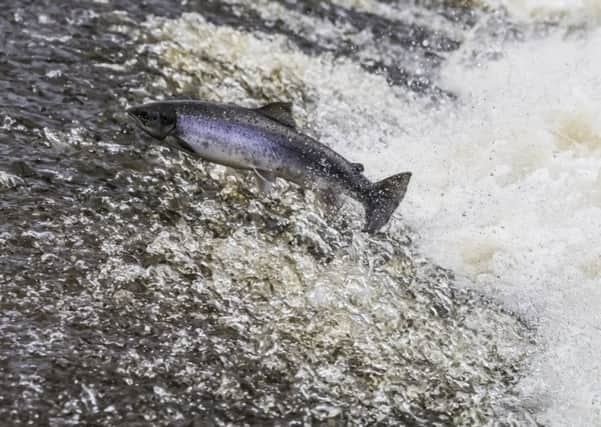Scotland's salmon windfall soars above £1bn, but production set to fall by fifth


The annual Scottish Fish Farm Production Survey found the value of the sector increased by 37 per cent year on year, with almost 190,000 tonnes of Atlantic salmon produced, up 16.5 per cent on 2016.
There was also an increase in the production of brown/sea trout last year from 41 to 61 tonnes, although the quantity of rainbow trout decreased by 6 per cent to 7,637 tonnes.
Advertisement
Hide AdAdvertisement
Hide AdThe Scottish Salmon Producers Organisation said the figures were testament to the “hard work and commitment” of producers, adding that demand for the product continues to outpace supply.
However, critics questioned the state of the industry and said production was predicted to fall this year by more than a fifth.
The latest tranche of data, published by Marine Scotland Science, marks the highest ever level of production recorded in Scotland
However, it forecasts the levels will fall to just 150,774 tonnes in 2018, which would be the lowest annual tonnage since 2009.
The survey also states the number of businesses operating fell by two, with the number of active sites down by eight. The total number of staff employed in marine salmon production fell by 55 to 1,431.
Charlotte Wright, chief executive of Highlands and Islands Enterprise, said: “These figures are good news for Scottish aquaculture and show the significant social contributions the industry makes to remote rural, island and coastal areas by supporting high-skilled jobs, diversifying and protecting communities.
“Salmon farming is a major contributor to the Highlands and Islands economy and brings additional business opportunities to the area. We have supported the aquaculture industry since its inception and as a vital sector which provides many jobs for rural communities.”
But Don Staniford, director of Scottish Salmon Watch, said: “Scottish salmon farming is dead in the water. Scratch the surface of this so-called ‘success story’ and you will find infectious diseases, lice infestation and mass mortalities lurking underneath.
Advertisement
Hide AdAdvertisement
Hide Ad“Salmon farming production is predicted to fall 21 per cent this year, blowing out of the water the Scottish Government’s expansion plans to double or treble production by 2030.”
He added: “The new data reveals that the mortality rate in the sea phase of production is now over a fifth, with around 15 to 20 million farmed salmon dying last year on Scotland’s salmon farms. And if you account for the losses in the hatchery, the real mortality rate stands at almost a half.”
Rural economy secretary Fergus Ewing said the government was putting in place the conditions for a “sustainable industry” capable of meeting demand.
He said: “The fish farm industry forms an integral part of Scotland’s rural economy, creating jobs and providing capital in some of our most rural communities. So it’s very encouraging to see salmon production value on the increase yet again.
“However, this huge Scottish success story is directly threatened by the UK Government’s Brexit plans, which would remove Scotland from the world’s biggest single market, which is around eight times the size of the UK market alone.”